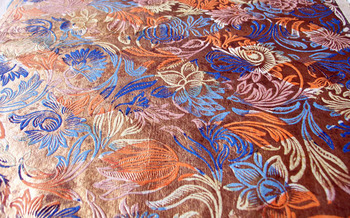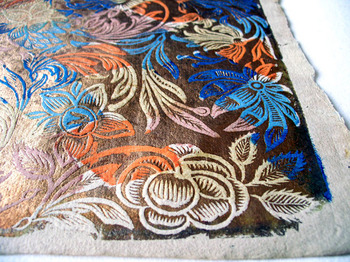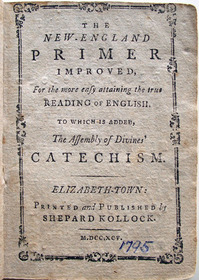According to Etherington & Roberts’ Dictionary of Descriptive Terminology, this type of 18th-century decorative paper was known as “Dutch Gilt,” although it was actually produced in Germany and Italy. The decoration was meant to imitate the brocades and damasks of the period. Many are embossed and the printing of colors was done by wood or metal rollers, along with added stenciling.
This sheet has been identified as pattern number 4, a floral pattern on embossed, gilt, and color-stenciled paper made by Paul Raymund in Nuremberg, 1700s. These sheets were often used for temporary paper bindings, especially on small children’s books.
Dutch Gilt or Brocade papers were imported and exported throughout Europe, as well as to the United States. Rare Books and Special Collections holds a number of volumes either bound in Dutch gilt papers or using them as endpapers. Below is an example from the Sinclair Hamilton Collection in Graphic Arts, published just north of us in Elizabeth, New Jersey.
Westminster Assembly (1643-1652), The New-England primer, improved, for the more easy attaining the true reading of English. To which is added, the Assembly of Divines Catechism (Elizabeth-town [N.J.], Printed and pub. by Shepard Kollock, 1795). Bound in Dutch gilt paper wrappers. Gift of Sinclair Hamilton. Graphic Arts Collection (GAX) Hamilton 1373




